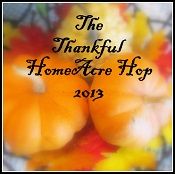 |
| My grandfather and my son shelling corn for corn meal. |
Have you ever had the privilege to spend time with someone who lived through the Great Depression? Have you listened to their stories? Have you learned their lessons? I have been blessed to spend a lot of time with my grandfather. He still knows things that I am wanting to learn, but one thing he has taught everyone of his family that are willing to listen is being self sustainable. Today we are primarily going to talk about the family grist mill. Yep, our family owns its own grist mill. My dad and my grandfather bought the mill when I was in my teens. Our mill has been operated every fall for about 30 years.
There is something special about eating things that have been grown and processed on your own or your families land. Not only do you know everything that has gone into your food, it tastes better too. Now I will tell you for me it is a really big bonus to know that my cornmeal was not sprayed with Roundup. It is also a big bonus for me to know that my cornmeal has not been drenched with pesticides.
The first step to making corn meal is shelling the corn. Shelling is getting the dried kernels off of the cob. You can do this by hand, but having a sheller saves a lot of time. The sheller above is not the sheller that I used as a teen. The one above is a lot nicer than the one I have the most time on. The sheller I spent my youth operating was a single turn sheller, which means each crank of the handle only turned the sheller one time. The sheller I operated was the same one my grandfather used when he was a child. The one pictured above was purchased by my great uncle's father in 1934. That's right the machine pictured above is nearly 80 years old and still works great. See the video below. Warning all of the videos included in this post are really loud and are more for visual purposes only. There is no narration.
As was pictured in the video above and in the picture below. The ground meal comes out of a small chute and is scooped up and bagged. You cannot seal the bags at this point, because the meal is still warm and can sour if you do not let the meal cool before sealing.
In about 1 hour we produced a little over 100 pounds of cornmeal. We took home about 40 pounds. Not bad for spending time with my grandfather and my youngest son spending time with his great grandfather. He may never read this but, I am proud of my grandfather for many reasons. Teaching us to be self sustainable is only one of them. Granddad I salute you.
Now for the most important part. How do you use this cornmeal. I say homegrown, home ground cornbread is the best, but you do have to treat it differently. First and a very important step is this must be sifted to remove the bran. It is really tough eating if you skip this step. Below is the crank type sifter I like best. To me it just works better.
Here is our families cornbread recipe:
3 cups sifted corn meal
1 egg
3/4 tsp Baking Soda
1/2 tsp salt
Add just enough milk or buttermilk (depending on your taste I like either, but like buttermilk most) to make the mixture soupy.
Bake at 475 degrees for about 30 minutes until golden brown.
Now, I know there are no longer mills in every community, in fact I only know of three mills that are still in operation. Sometimes you can find a mill by going to your local farmers market and asking around. If you cannot find a mill you can get a smaller version that you can do your grinding at home. I am going to post a link to two mills. One is electric and fairly expensive but has a lot of good reviews and one is hand cranked.
My grandfather tells this story to everyone who will listen. When he was a kid he and his brothers shelled a bushel of corn and took it to the mill every Saturday. They ate cornbread and beans every day of the week and if they didn't have that they would not have eaten. We are blessed beyond measure today.
Note: You can use field corn or even popcorn to make cornmeal. White field corn tastes a little different from yellow field corn and popcorn tastes different from both of them. You can buy all of them in bulk and save a lot of money. I believe you can find a grower of at least one of these corns close to you that do not use all of the chemicals and have a healthier food supply.
We can take back control of our own food supply, even if it is one person at a time.
If you enjoy these articles consider joining this site by clicking the join this site button to the right. You can also sign up for email updates by filling out the form at the top right and finally you can follow The Rural Economist on Facebook by clicking HERE.
In everything you do...
Keep It Rural







No comments:
Post a Comment